Jamie Dixon is a true pioneer in the world of visual effects. He was one of the first employees at Pacific Data Images in 1985. His wire removal on TERMINATOR 2 was one of the first and same thing about the morphing on the faces for the music video BLACK & WHITE of Michael Jackson. He founded Hammerhead in 1995, with Dan Chuba, Thad Beier and Rebecca Marie, and work on many films such as TRUE LIES, TITANIC, X-MEN, THE CHRONICLES OF RIDDICK or WANTED.
What is your background?
I started studying computer graphics in the early ’80s at UC Berkeley and started doing national broadcast graphics at Pacific Data Images in 1985. In 1988 I had the opportunity to work on SCROOGED for Paramount Pictures and was bitten by feature films. In 1990, still with PDI, I worked on TERMINATOR 2 and through 1995 worked on around 80 other films including TRUE LIES and TOYS. In 1995, myself and 3 other partners started Hammerhead Productions and since then have contributed visual effects to over 100 major studio motion pictures including TITANIC, DEEP BLUE SEA, X-MEN, FAST AND FURIOUS and UP IN THE AIR.
How was your collaboration with director Michel Gondry?
Michel was very interested in using minimal visual effects in THE GREEN HORNET. He wanted everything to be absolutely realistic and nit to have the audience ever question that. The effects in the film eventually fell into two categories, those driven by production realities and the more whimsically creative. In consultation with him and the producers, I mainly handled the standard effects so he could concentrate on the creative.
What was his approach with the visual effects?
Michel’s experience with visual effects on this scale was pretty limited and he basically allowed me the opportunity to recommend techniques to handle the standard types of shots. For the creative moments, he was pretty loose as far as planning went. I believe he had a clear idea on the results he wanted but we were never quite sure how he wanted to get there. For those sections, we shot many takes and angles and he took that footage into a Flame and started trying to “find it”. After mocking up examples of what he wanted, we could finally focus on completing the shots with the fidelity expected.
What are the sequences made by Hammerhead?
Hammerhead mainly worked on the driving sequences where the shots with the actors were filmed against bluescreen as well as the “gas gun”. Hammerhead did around 300 shots for the film and in addition to those two sections filled in many of the little one-off elements.
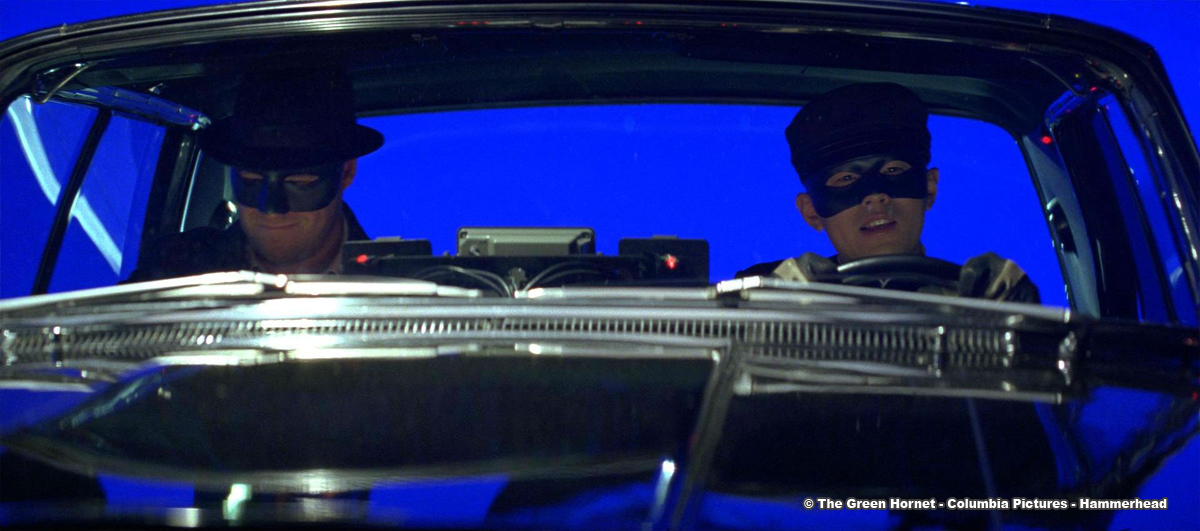 |
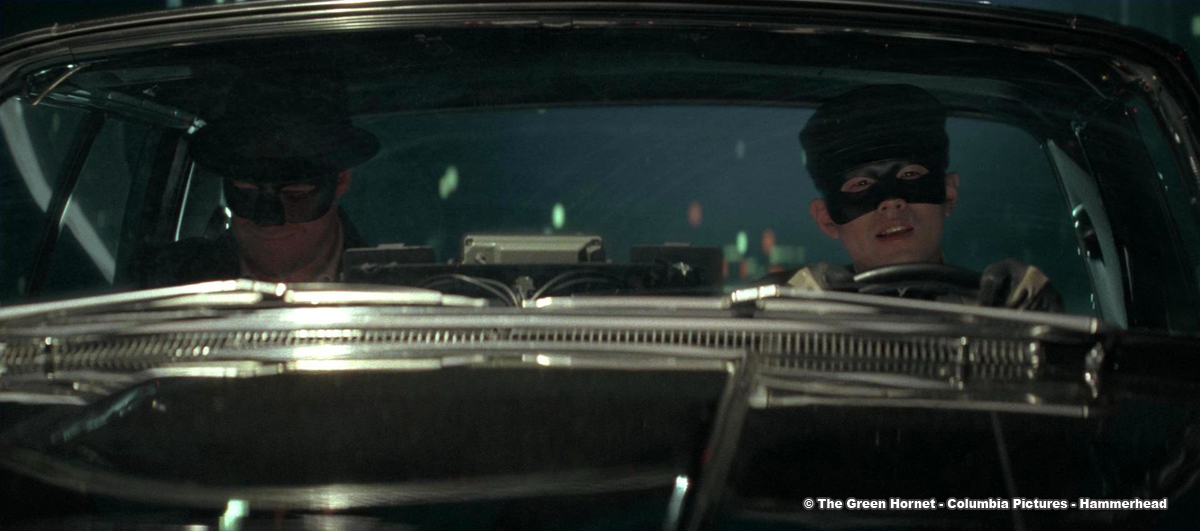 |
How did you get the idea of slow motion in which certain objects or vehicles lengthen and multiply?
Michel had done a “fight test” before he was hired to direct the film and he used a Phantom camera that shot 1000 frames per second to film it. He then selectively sped up and slowed down different parts of the frame to achieve a fluid and warped sense of time. For the film, we basically did the same, shooting the fight on that camera then manipulating in post.
Have you received any references particularly from Michel Gondry for Kato slow motion and Kato vision?
The test he had done.
How do these scenes were filmed?
The Phantom camera is a digital, high definition camera that can shoot up to 1000 frames per second but our scenes were shot at either 300 fps (closeups) or 150 fps (wider shots). Because of the high speed and low asa of the sensor, lots of additional light was needed but the scene was pretty much run in a regular fashion. The magic all came in post.
Can you tell us about the creation of green gas? How did you design and create it?
Early in production, I had realized that the green gas was going to be an important part of the film, even before the filmmakers had wanted to start thinking about it. Hammerhead began testing and creating examples of what it could look like and that gave us the confidence that we could shoot the scenes without any physical smoke and add it later. Luckily, this made us ready and when the producers started asking for example shots that they could use in early marketing, we could deliver.
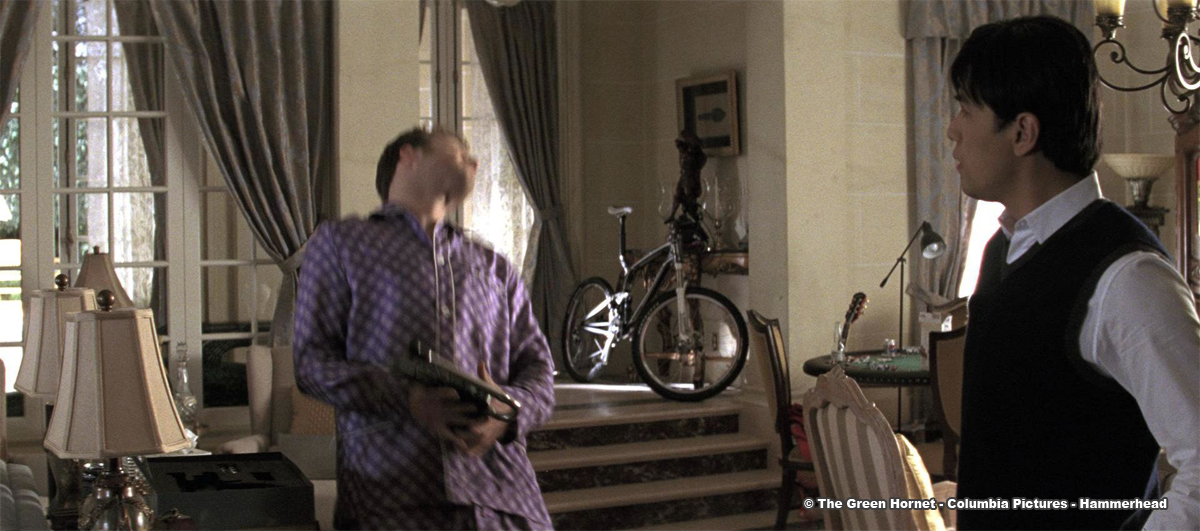 |
 |
How does a typical day for you? On set and during post-production?
During production, I was typically there early and stayed late. In addition to the main unit, we had an extensive second unit shooting action scenes. There were many overlapping days where main unit would shoot during the day and second unit would be on nights. Even though I had a crew handling all of the mechanical aspects of visual effects production, I needed to be many places at the same time and basically spent long hours bouncing between units. In post, in addition ot Hammerhead, we had Luma Pictures, CIS Hollywood and Pixomondo contributing. My typical day would be to start at Hammerhead then head over to my office at the studio (on the Sony lot) where we would review dailies, consult with editorial and then maybe visit one or more of the vendors.
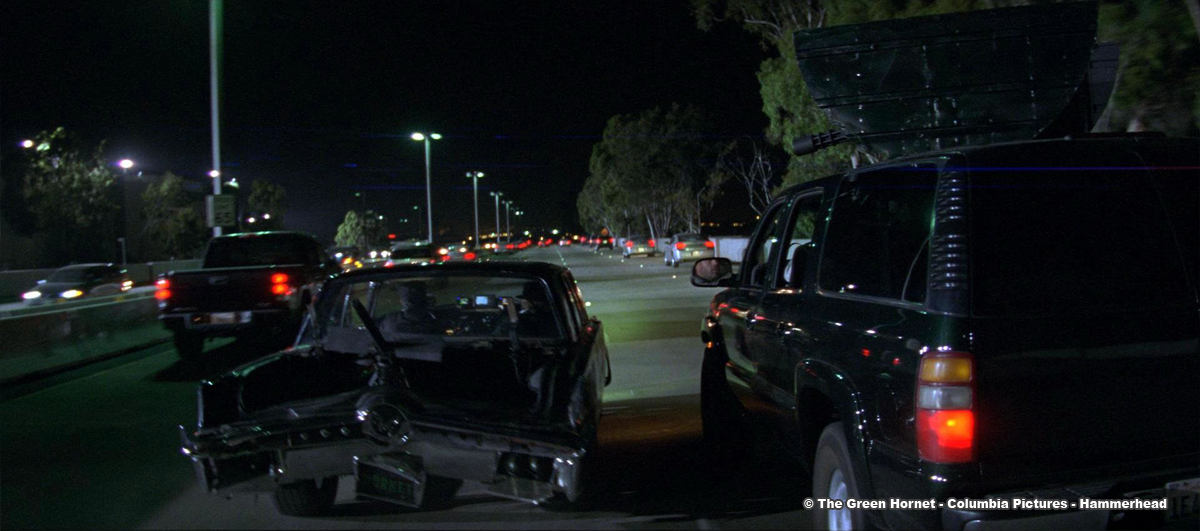 |
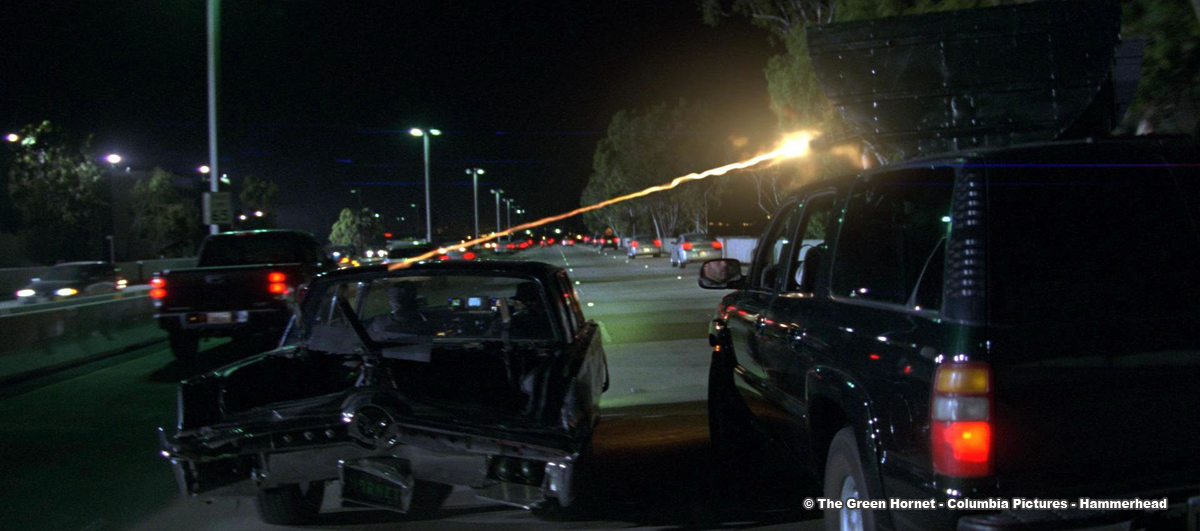 |
How did you manage to reproduce the interactive lighting of the city during the driving scenes with the Black Beauty?
The backgrounds for those scenes were shot at the same time as the exterior action scenes. Once a particular stunt was filmed, we would run our camera car down the same route and capture the needed angles. On the bluescreen stage, we would study the footage and there was an extensive lighting rig that we would adjust to roughly match the setting. Sometimes there would be very few lights and others many. There were only a few differing environments that needed matching and frankly, at least when shooting the closer angles a direct match is not really necessary.
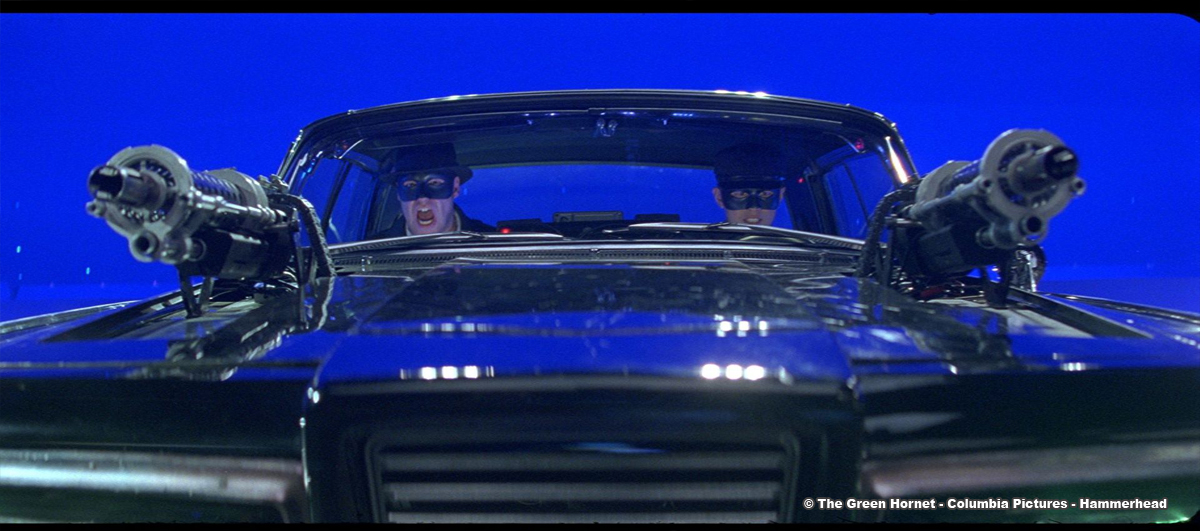 |
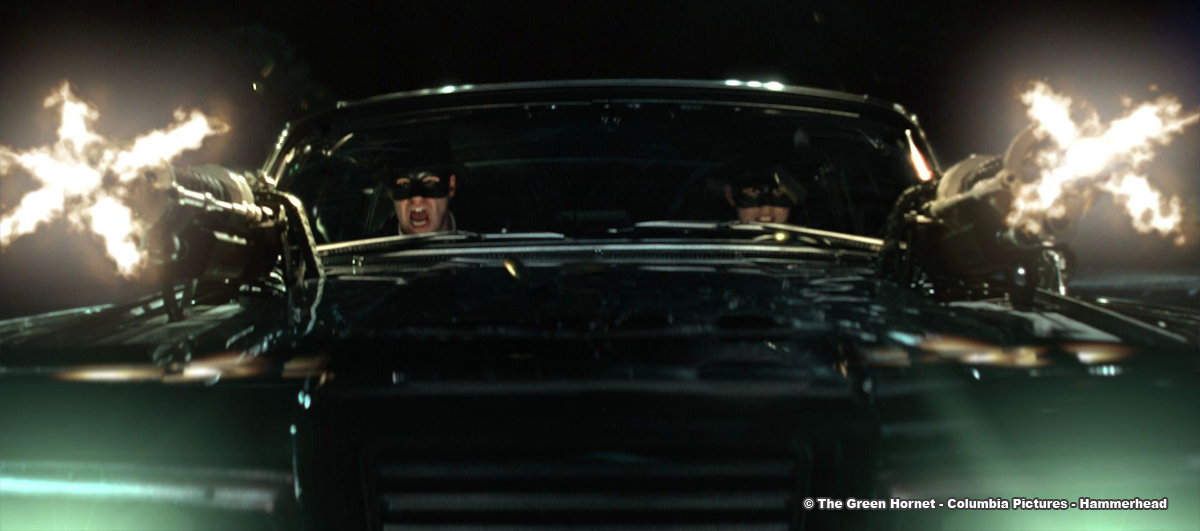 |
Did you used digital doubles?
There were only a couple of shots in the film that had classic digital doubles. There is a shot of a guy wearing green being tossed from an overpass and then during the parachute ending. There were around a dozen face replacement shots where you could clearly see that a stunt player had performed and we needed to replace that with the actor. During production, we scanned the main players to have that option.
How did you handle the stereo conversion?
Luckily and wisely, the stereo conversion of the film was handled by a different department that could focus solely on that task. Of course the VFX department was fully supportive and the vendors would provide many additional layers to the conversion houses in addition to completed shots. For instance, clean backgrounds that matched the bluescreen shots gave them the opportunity to create better separation.
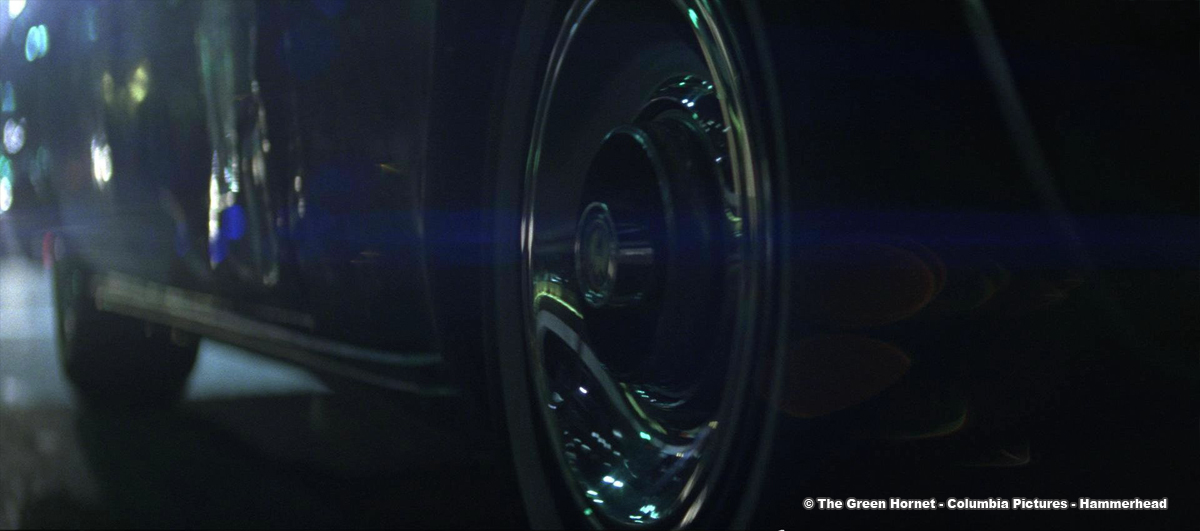 |
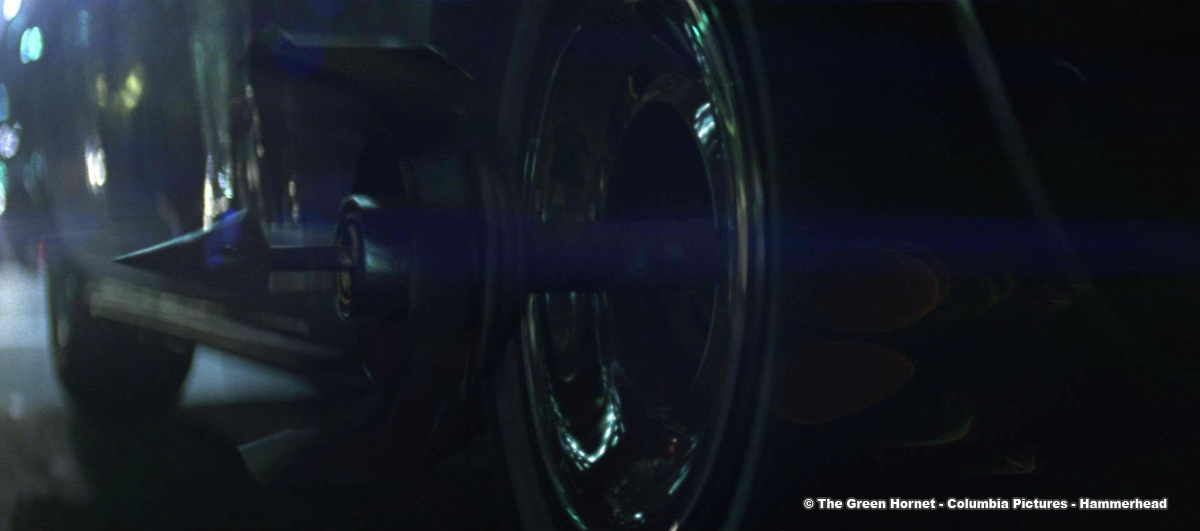 |
As a production visual effects supervisor on the film, how did you choose the sequences that would be made by other studios?
We looked at the scope of work and had around a dozen different houses bid on executing the work. During that process it became pretty clear who would be best suited for the different needs of the film. We made the selections based on that and also by selecting vendors that would work well sharing assets between each other. Since I was overseeing the whole process, I could help ensure that there was a consistent result and because I come from a vendor background it put me in a good position to understand the inner workings of each of the players.
Can you explain the sequence distribution in other studios?
Luma Pictures in Venice handled most of the 3D scenes including the car flipping, the printing press set extensions and the parachute scene.
CIS Hollywood did the Kato-Vision scenes including the cemetary fight, the south central fight and the shot in the bullpen at the end when Seth gains that ability. They also did the 16 frame fluid split-screen shot.
Pixomondo in Santa Monica handled the Britt flashback which was a dreamy recollection of previous moments.
Finally CIS Vancouver filled in with a lot of the clean up and fixit shots.
What was the biggest challenge on this project?
I think it had to be understanding Michel’s vision and reconciling that with his process. He had a relatively unorthodox way of describing and executing those creative scenes and getting in sync with him took a lot of effort. In the end, I am very happy with how that all turned out and in hind sight it seems obvious but at the time it was very challenging to make sure that I was giving him what he wanted.
Was there a shot or a sequence that prevented you from sleeping?
All 650 shots! Actually there were never any that I doubted. We had plenty of time and resources and we had the best companies in the business working on the film. Everyone was very enthusiastic about this film and contributed far above the minimum. The atmosphere with editorial and the filmmakers was very collaborative and we really had the chance to design the best solutions to every problem and execute that.
What is your pipeline and your software at Hammerhead?
Hammerhead mainly uses Nuke for compositing, Maya for 3D and FumeFX for smoke, all running on Linux boxes. We have a couple of hundred processor render farm.
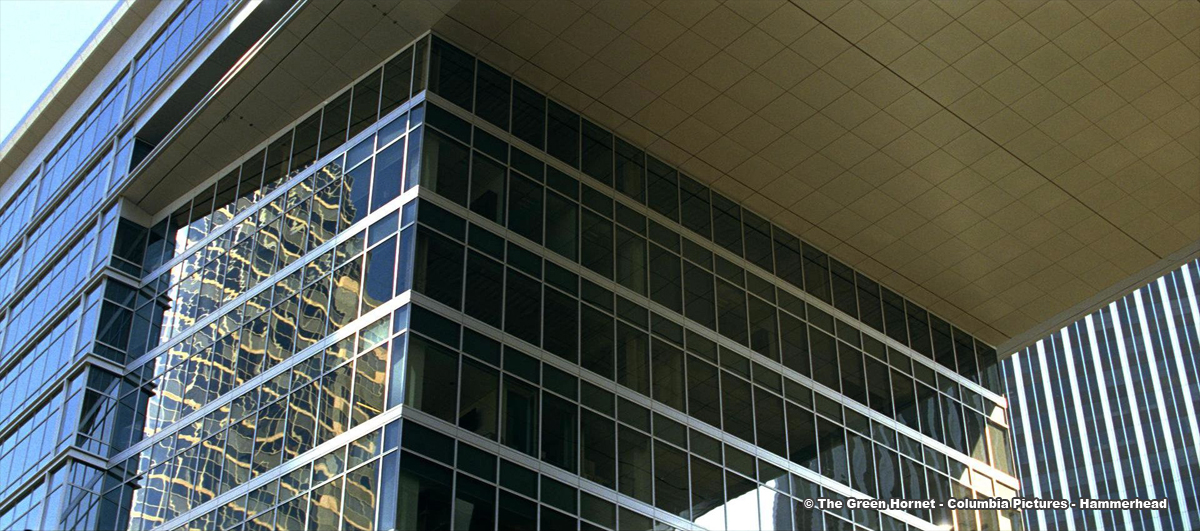 |
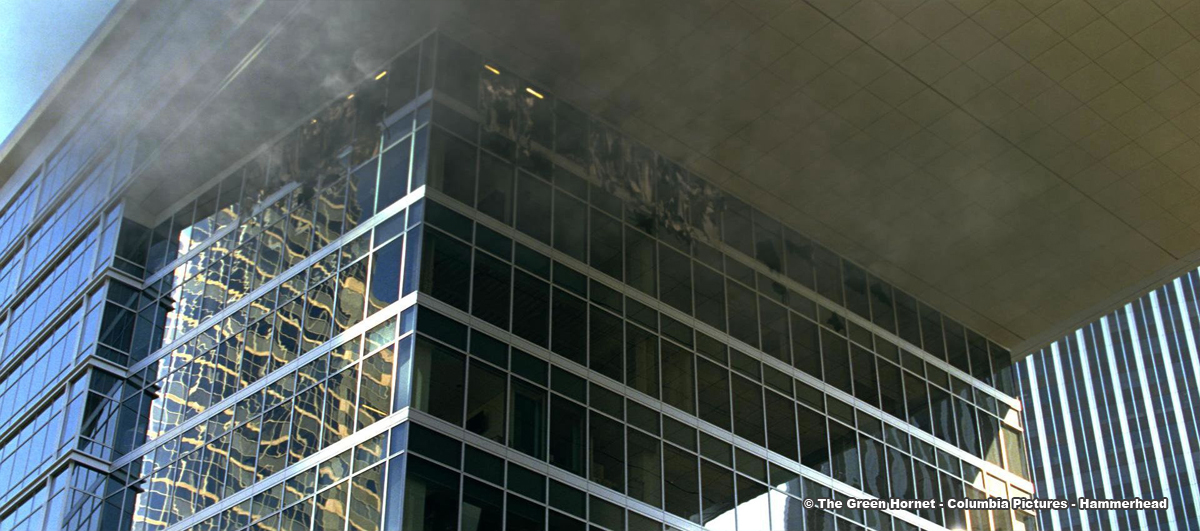 |
How long have you worked on this film?
I started in June of 2009, photography was completed in December 2009 and we finally viewed the finished 2D print in November of 2010.
How many shots have you made and what was the size of your team?
There were around 650 shots in the final film though we produced roughly 900 to varying degrees of completion. I had a VFX producer (Lori Nelson during production and Camille Cellucci in post), 2 coordinators and a PA. During photography, we had a VFX camera unit that included an AD, DP and various assistants.
What do you keep from this experience?
The lasting revelation is that it’s very difficult to judge the final quality of a film during production. We had many times on this one where it was impossible to believe that it would turn out to be something we would be proud of. In the end, and because of very focused and intense work by Seth Rogen, it actually turned out to be great. Who knew?
 |
 |
What is your next project?
Hammerhead is very busy for the foreseeable future and we are currently working on projects for Paramount, Warner Brothers and Dreamworks.
What are the 4 movies that gave you the passion of cinema?
I have always loved the “creature feature” films of the 50’s and 60’s. The early visual effects treats that I continue to enjoy were 2001 A SPACE ODISSEY, INDIANA JONES and GHOSTBUSTERS. My current addiction started back in 1988 with SCROOGED and the realization that I could actually contribute to such a grand art as film.
A big thanks for your time.
// WANT TO KNOW MORE ?
– Hammerhead Productions: Dedicated page about THE GREEN HORNET on Hammerhead website.
– fxguide: THE GREEN HORNET article on fxguide.
© Vincent Frei – The Art of VFX – 2011







wow, nice interview.
thank you Jamie Dixon, And artofvfx.com